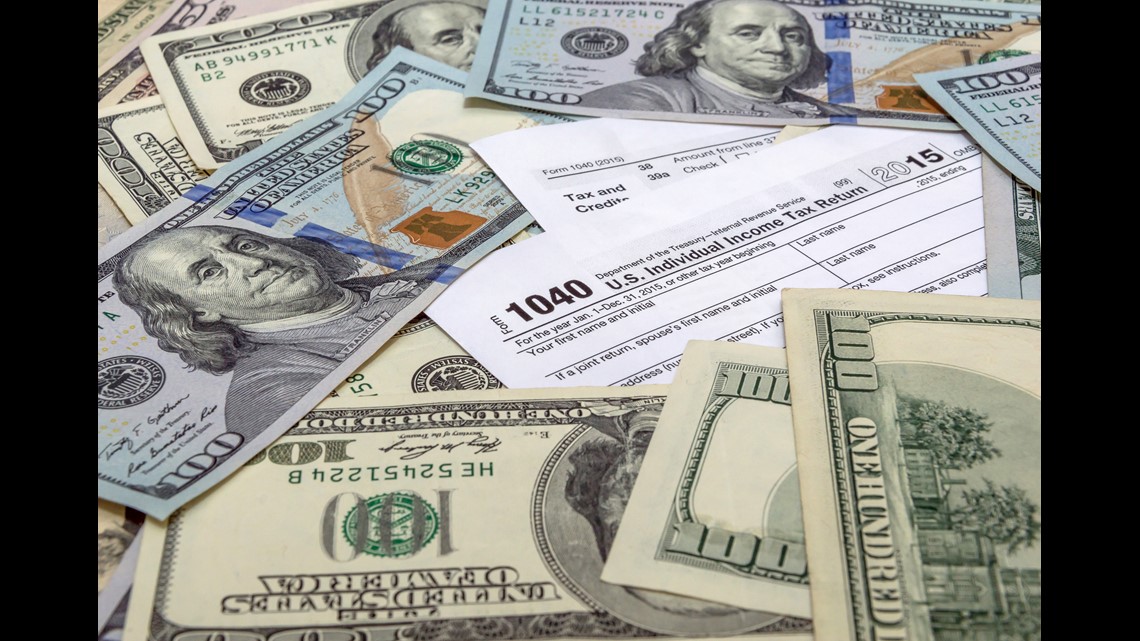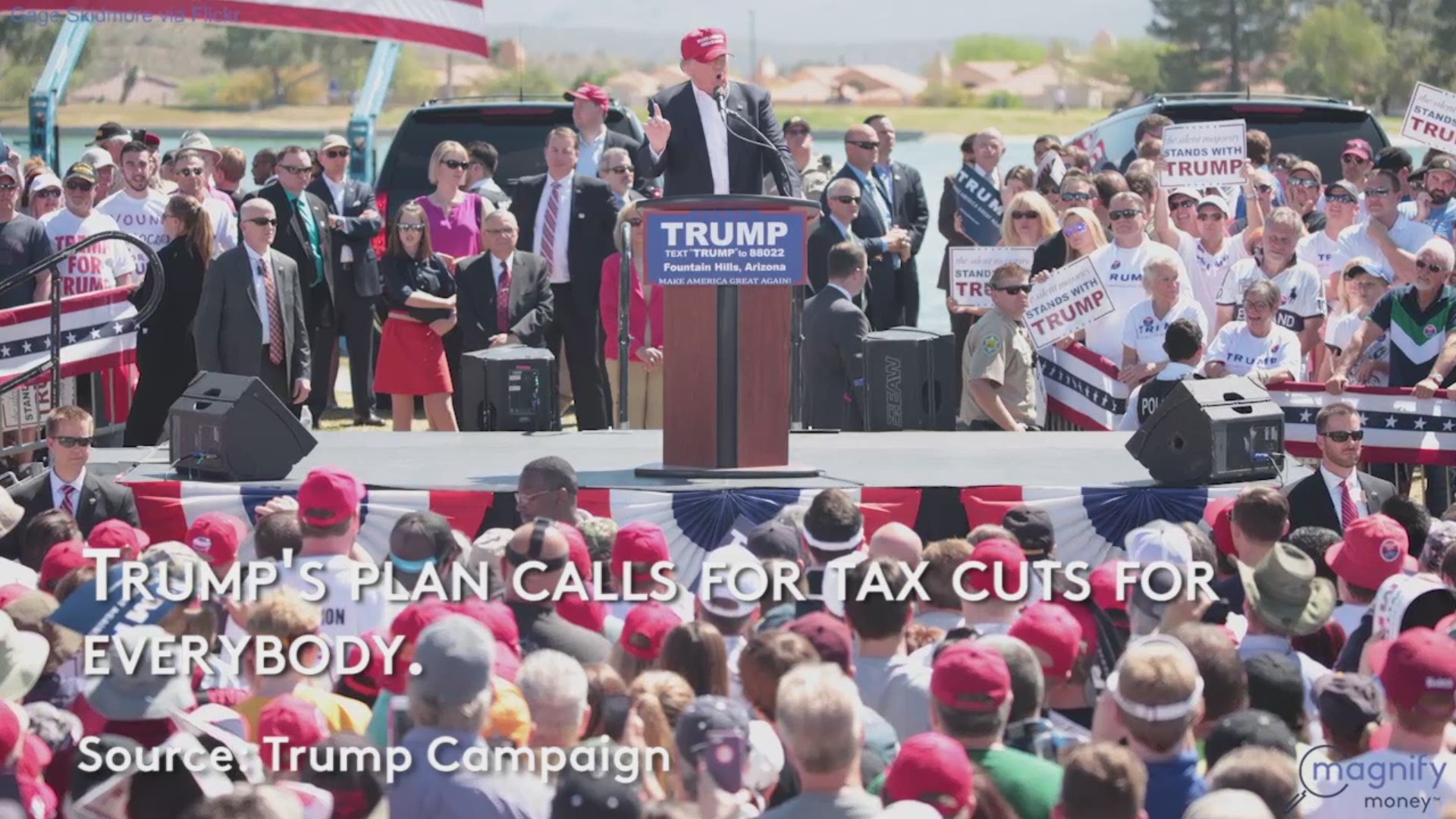With the election a month away, presidential candidates Hillary Clinton and Donald Trump have just a few weeks left to woo voters across the U.S.
If you’re still on the fence about which candidate to vote for, your final decision may hinge on how their policy ideas could potentially impact your wallet.
We have simplified and broken down each candidate’s stance on three key issues — job growth, taxes, and housing — to help you understand exactly how each candidate’s proposals could affect your wallet.
Jobs
Clinton: Hillary Clinton plans to create new jobs by investing $50 billion in programs that promote youth employment, small business growth, and re-entry programs for the formerly incarcerated. She plans to invest another $50 billion in the Rural Infrastructure Opportunity Fund, a publicly funded initiative that seeks to invest in public infrastructure in rural areas to attract more businesses and, as a result, more jobs for the under- and unemployed.
Clinton is also a supporter of the “ban the box” movement to get rid of the box on applications that requires job seekers to select whether or not they have a criminal past. She has proposed banning such questions on applications for federal employees and contractors. She will also require companies to only consider criminal history when it is related to the job applied for and grant the right of appeal to those who are rejected because of a criminal past.
Clinton says she will invest $25 million in small business and private investment. She wants to do that through mentorship programs and by expanding federal funding for programs that target small business development.
Trump: Donald Trump has said he plans to relax federal regulations in order to lower the cost of doing business for major corporations in the U.S., an effort he hopes will dissuade them from moving their business (and jobs) overseas.
Trump’s plan points to energy as a source for new jobs in the future. He says will make the U.S. the world’s dominant leader in energy production by scraping programs like the Environmental Protection Agency’s Clean Power Plan, a 2015 initiative led by President Obama to reduce carbon emissions and increase regulations on coal-powered plants. The plan has been stalled since February, when the U.S. Supreme Court agreed to hear a case that questions the constitutionality of the plan.


Taxes
Clinton: Hillary Clinton’s tax plan focuses on raising taxes on high-income taxpayers (the top 1%) and closing tax loopholes. Her plan also includes increasing estate and gift taxes. The majority of her proposed tax policies won’t affect the bottom 95% of taxpayers, according to the Tax Policy Center.
Part of Clinton’s plan is to raise taxes on higher-income taxpayers with a 4% “Fair Share Surcharge,” which would apply to those making $5 million or more annually. She also says she’ll close tax loopholes favored by the wealthiest earners in part by supporting the Buffett Rule, which would levy a 30% income tax on any individuals earning $1 million or more. The Tax Foundation, a nonpartisan research group, has warned that such a plan would provide a meager boost to tax revenue.
In addition, Clinton wants to restore the estate tax to its 2009 level. Doing so would increase taxes on multi-million dollar estates — to as much as 65% for an estate valued at more than $1 billion for a couple — and close loopholes that deflate the value of the estates.
According to the Tax Policy Center, a left-leaning think tank, which in March completed an analysis of Clinton’s tax proposal, the plan would generate an additional $1.1 trillion in tax revenue. Households earning less than $300,000 would see little to no change in their federal income taxes, according to the analysis.
Trump: At the core of Donald Trump’s plan are tax cuts for everybody — with an emphasis on corporations and middle- and high-income Americans. Trump says he will reduce the number of tax brackets to three from the current seven.
Under his plan, the new tiers would be:
- 12% (married filing jointly households earning less than $75,000)
- 25% (married filing jointly households earning between $75,000 and $225,000)
- 33% (married filing jointly households earning more than $225,000)
Brackets for single filers would be half of these amounts.
The Trump plan would also increase the standard deduction for joint filers to $30,000, from $12,600, and the standard deduction for single filers to $15,000. His plan would also eliminate the death tax (aka. the estate tax) and gift taxes.
Trump’s plan would reduce the nation’s income by about $4.4 trillion to as much as $9.5 trillion over the next decade, according to several independent research groups. It would also mean increased income for all income levels, with the largest gain going to the top 1%. The top bracket could see its average annual income boosted by as much as 16%, while the bottom 80% would see a 0.8% to 1.9% rise according to the Tax Foundation. The Tax Policy Center estimates that Trump’s plan could increase the national debt by as much as 80% if it isn't counterbalanced with huge spending cuts.
Housing
Clinton: Hillary Clinton’s proposed policies include a $25 billion investment in housing. She plans to offer a federal match of up to $10,000 for savings going toward a down payment for people who earn less than the median income in their area. She also plans to increase access to “lending in underserved communities, support housing counseling programs and police abuse and discrimination in the mortgage market.”
Clinton says she will raise support for affordable rental housing and wants to motivate communities to try land-use strategies that may make it easier to build lower-cost rental housing near businesses. Clinton says she will also make efforts to expand living options for recipients of housing vouchers.
Trump: Donald Trump doesn’t have a housing policy outlined on his campaign site.
Make sure to register to vote by Oct. 14.
MagnifyMoney is a price comparison and financial education website, founded by former bankers who use their knowledge of how the system works to help you save money.

